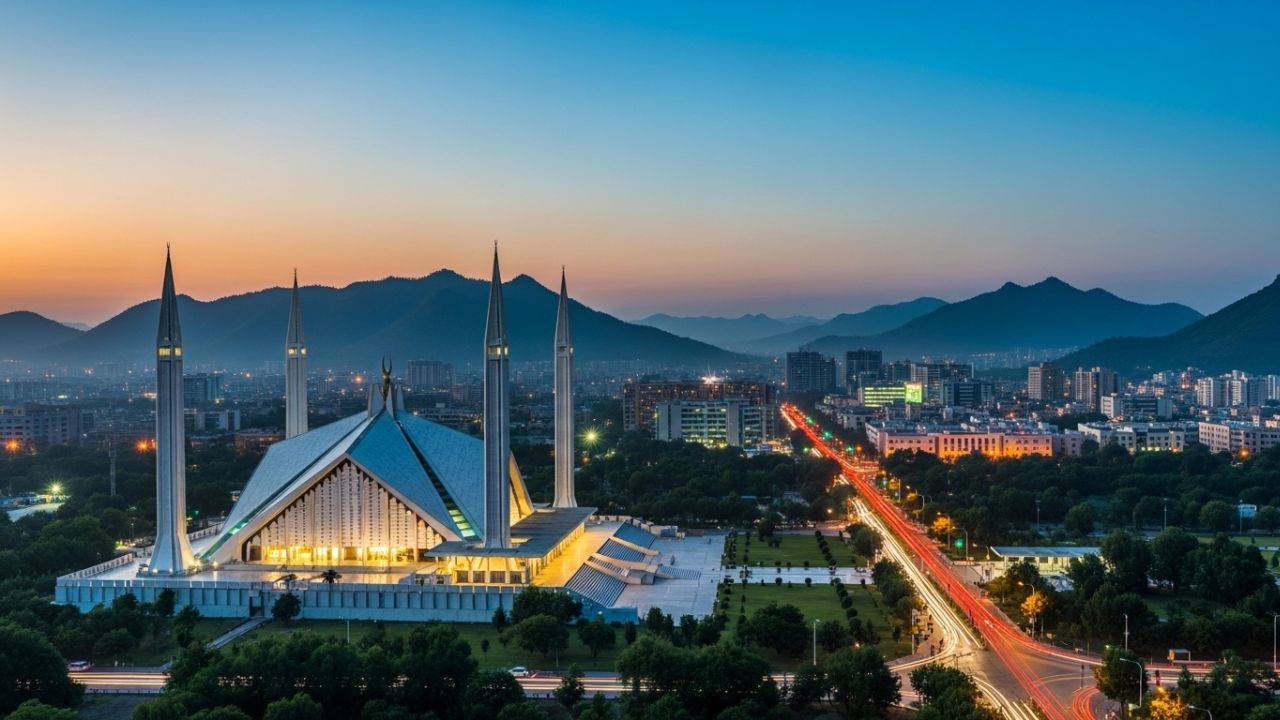Introduction
Islamabad serves as Pakistan’s capital. People admire its planned design and natural beauty. Additionally, the city blends modernity with tradition seamlessly. Residents enjoy a high quality of life here. Moreover, its location near the Margalla Hills adds charm.
History of the City
Leaders chose this site in the 1960s for a new capital. Architects designed it under President Ayub Khan’s vision. Builders completed major structures by 1967. Furthermore, the name means “City of Islam” in Urdu. Historians note its shift from Karachi as the previous capital.
Early Development
Greek architect Constantinos Doxiadis planned the layout. Workers built wide avenues and sectors quickly. However, challenges like terrain issues arose during construction. Officials divided the area into zones for efficiency. Thus, the capital grew systematically.
Modern Milestones
Pakistan’s government moved here officially in 1967. Diplomats established embassies in dedicated areas. Additionally, the city hosted international events over decades. Leaders expanded infrastructure to meet growing needs. Consequently, it became a hub for politics.
Geography and Climate
The capital sits at the Potohar Plateau’s northern edge. Mountains surround it on one side. Rivers flow nearby, providing water sources. Moreover, elevation reaches about 540 meters above sea level. Seasons vary distinctly throughout the year.
Landscape Features
Margalla Hills National Park protects wildlife. Lakes like Rawal add scenic views. Trails attract hikers regularly. Furthermore, green belts cover large portions of land. Planners integrated nature into urban design.
Weather Patterns
Summers bring hot temperatures up to 40 degrees Celsius. Monsoons deliver rain from July to September. Winters cool down with occasional fog. However, springs bloom with flowers everywhere. Thus, visitors prefer mild seasons for travel.
Economy and Industries
Businesses thrive in commercial sectors. Government offices drive much employment. Tech firms set up operations recently. Additionally, tourism boosts local revenue. Traders export goods from nearby areas.
Key Sectors
Agriculture supports surrounding regions. Factories produce textiles and electronics. Banks operate in financial districts. Moreover, real estate develops rapidly. Entrepreneurs start ventures in IT parks.
Growth Factors
Foreign investments fuel projects. Infrastructure improvements attract companies. However, challenges include energy shortages at times. Officials implement policies for sustainable growth. Consequently, the economy expands steadily.
Culture and Lifestyle
Locals celebrate festivals with enthusiasm. Cuisine features spicy dishes and teas. Art galleries showcase paintings. Furthermore, music events draw crowds often. Families value education highly.
Daily Life
People commute using modern transport. Markets bustle with shoppers daily. Sports like cricket unite communities. Additionally, mosques serve as social centers. Residents maintain a balanced routine.
Traditions and Modernity
Traditions blend with contemporary trends. Weddings include colorful rituals. However, youth adopt global fashions. Cultural centers host workshops. Thus, diversity enriches the scene.
Tourist Attractions
Faisal Mosque stands as an iconic landmark. Visitors climb Daman-e-Koh for views. Shakarparian offers gardens and museums. Moreover, Lok Virsa Museum displays heritage items. Trails in hills provide adventure.
Popular Sites
Centaurus Mall combines shopping and entertainment. Pakistan Monument honors national history. Rawal Lake allows boating activities. Furthermore, Saidpur Village shows rural charm. Tourists photograph these spots often.
Outdoor Activities
Parks invite picnics and walks. Birdwatching occurs in reserves. However, adventure seekers hike trails. Events like flower shows happen seasonally. Consequently, nature lovers flock here.
Education and Institutions
Universities rank among Asia’s best. Quaid-i-Azam University leads in research. Schools follow international standards. Additionally, libraries stock vast collections. Students pursue diverse fields.
Higher Learning
Institutes focus on science and technology. Campuses host seminars regularly. Professors guide innovative projects. Moreover, scholarships aid talented youth. Graduates contribute to national development.
School System
Primary education emphasizes basics. Private academies offer advanced curricula. However, public schools improve facilities. Extracurriculars build skills. Thus, literacy rates rise.
Final Verdict
The capital inspires with its blend of nature and progress. Travelers find endless discoveries. Additionally, residents build a bright future. Challenges exist, but opportunities abound. Therefore, this place captivates hearts worldwide.
